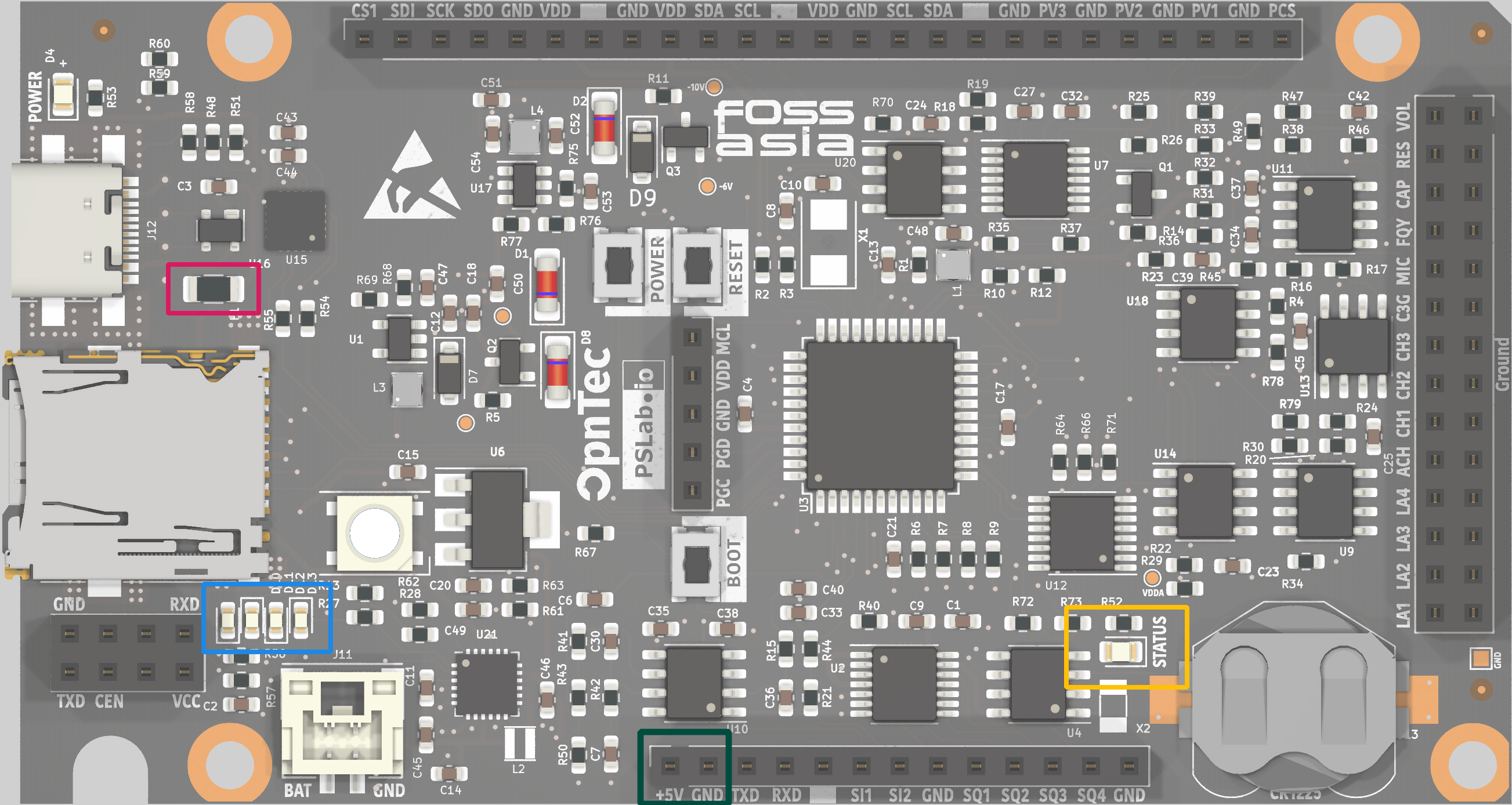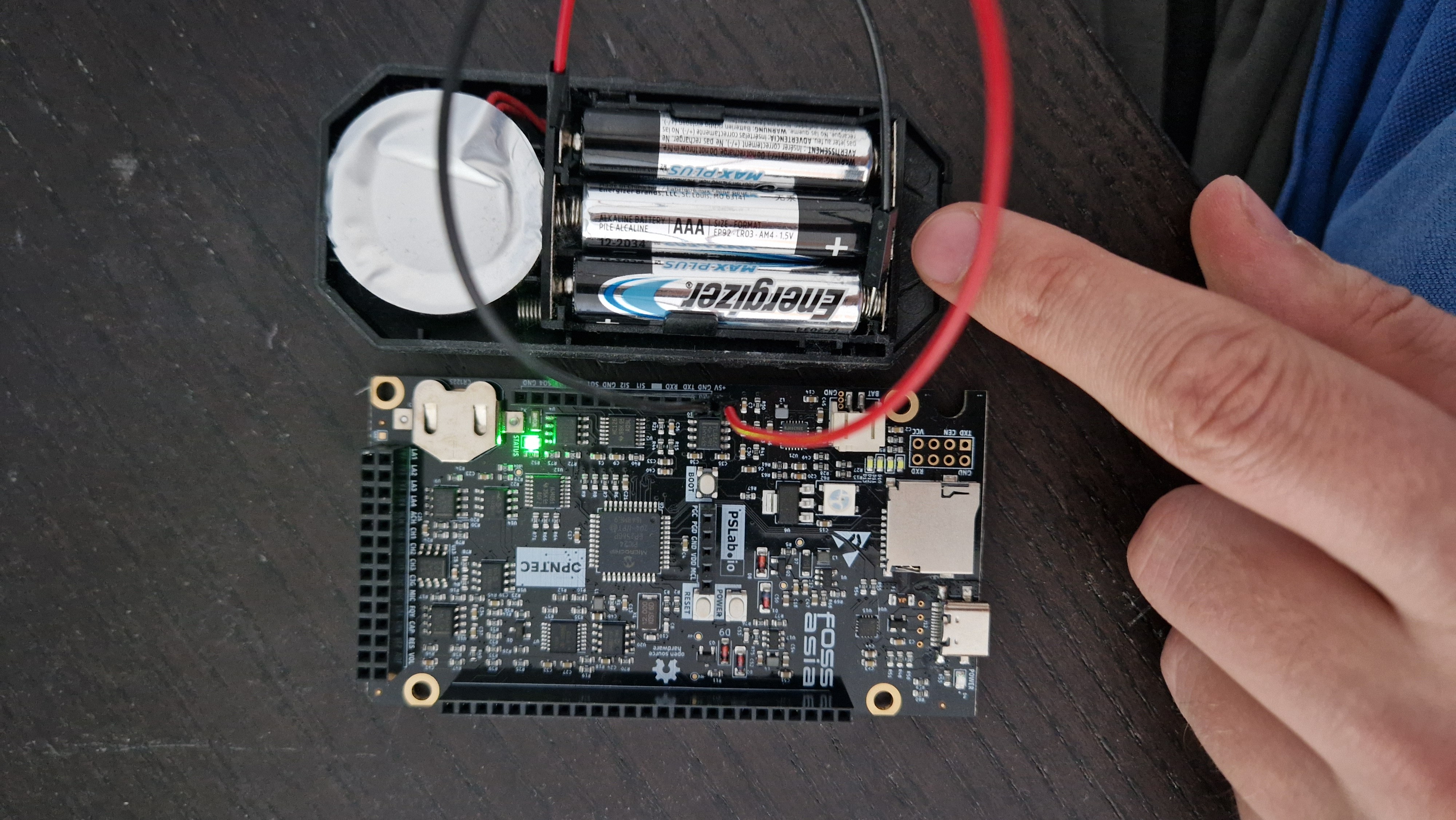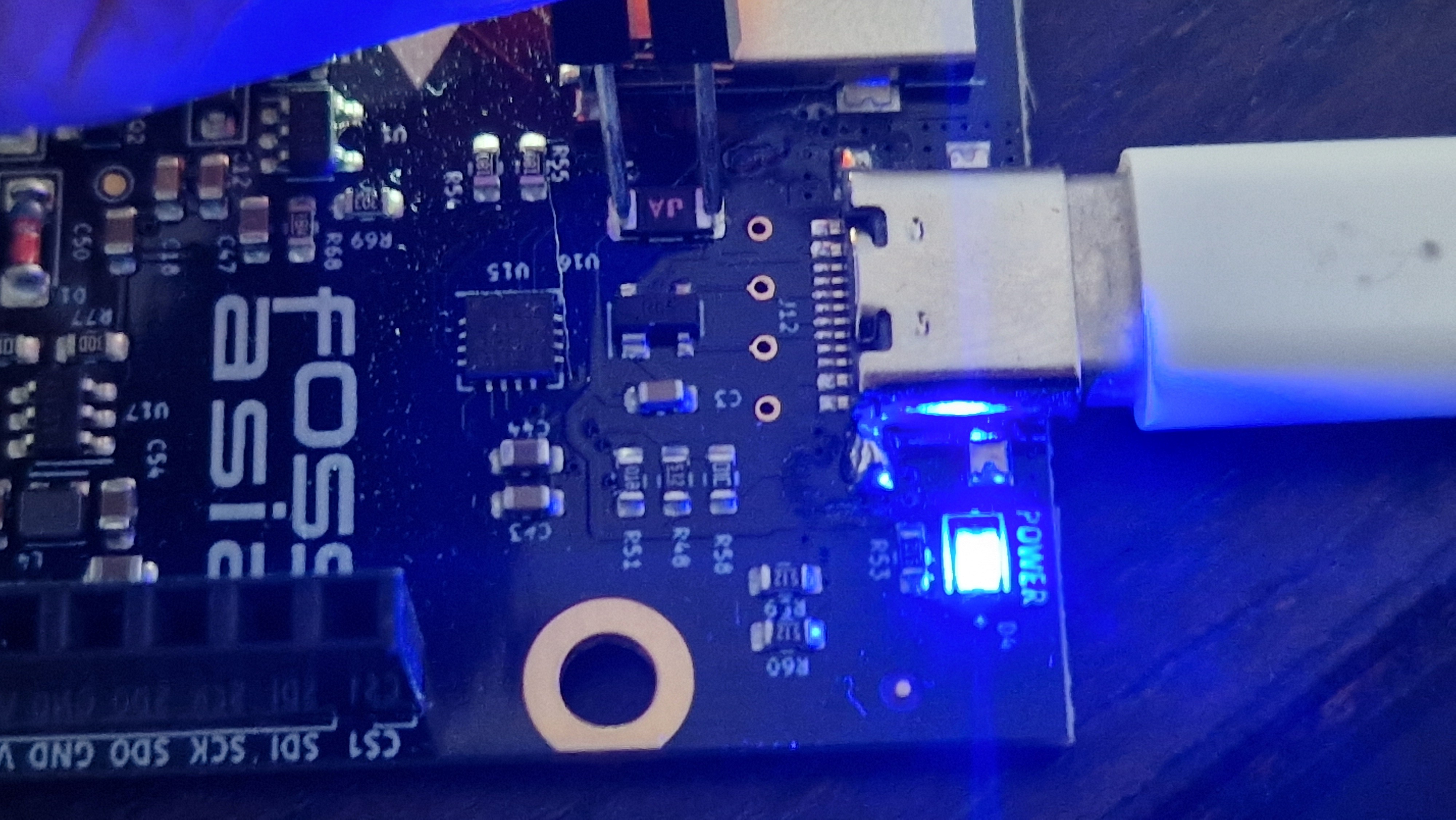The PSLab features a resettable fuse, designed to protect its sensitive parts from overcurrent.
Cerise: Resettable fuse
Blue: Battery charge indicator LEDs
Yellow: STATUS LED
Dark cyan: +5V and GND pins
In some cases, the fuse may incorrectly cut power to the PSLab during startup. The symptoms of this are:
- The PSLab does not boot, i.e. the STATUS LED does not light up.
- The battery charge indicator LEDs flash irregularly.
- The PSLab emits a high-pitched noise.
Video showing typical symptoms and solution with method #2 below:
short.mp4
If at least two of these symptoms are present, try bypassing the resettable fuse to resolve the problem. Once the fuse has been bypassed and the boot process has completed, the problem does not reoccur.
To bypass the fuse, use one of the following methods.
The PSLab can be powered by supplying 5 V between the pins labelled +5V and GND. Suitable sources of 5 V include:
- Programmable voltage sources, a common laboratory equipment.
- A fixed 5 V power supply, such as the power supply of a Raspberry Pi.
- Three fresh alkaline cells connected in series.
The supply voltage must exceed 4.5 V in order for the PSLab to be able to boot. Three alkaline cells just barely achieve this voltage when they are fully charged; if they are used, or have been sitting in a drawer for some time, they may not be able to supply sufficient voltage.
Be careful not to overvolt the PSLab! Supplying a voltage above 5.5 V on the +5V pin may permanently damage the device!
The fuse can be short circuited by connecting its two terminals using e.g. a jumper wire or a metal paper clip. This must be done while the device is powered via USB.
Be careful not to touch any other part of the PSLab with the jumper wire! Doing so may permanently damage the device!


